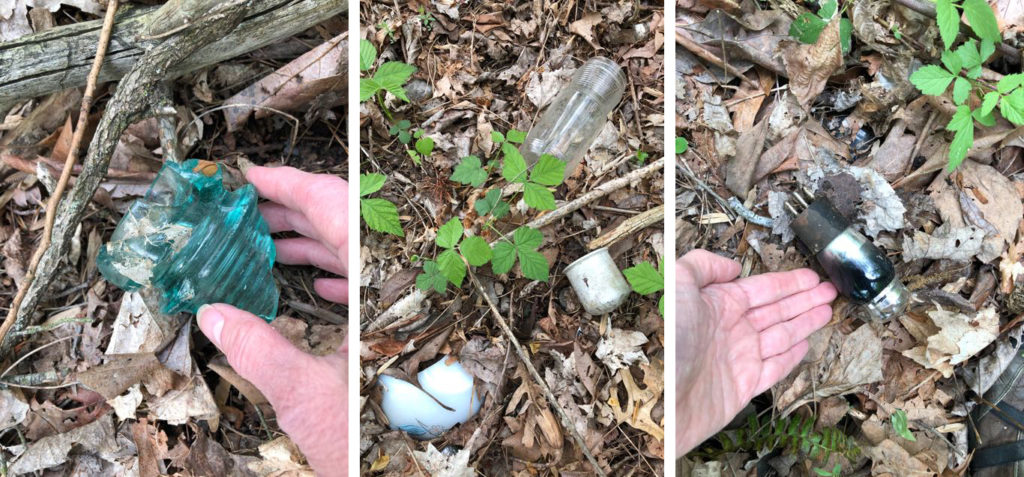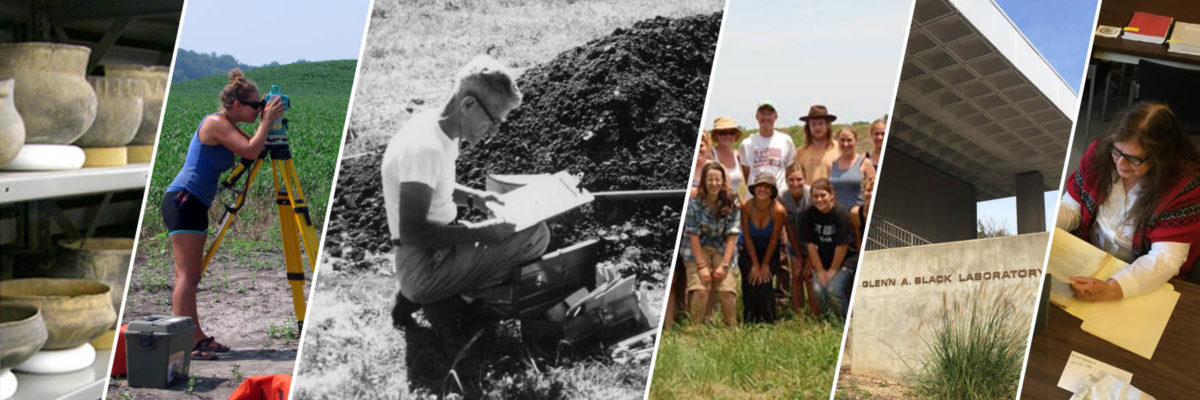You can take the archaeologist out of the archaeology laboratory, but I don’t think you can take the laboratory out of the archaeologist. In being separated from the physical lab space for both work and teaching, I’ve been thinking more about how the world outside of a physical building, holds the collections, assemblages, sites, and material culture that archaeologists and museum folk value and interpret. I made a foray into the woods that surrounds my house in Unionville to get a break from Zoom and visited an old midden, a dump of materials discarded from the early to mid 20th century. It was a common practice to dispose of unwanted and broken things into pits or drainages, especially before landfills and trash pickup became common.
Tossed into a natural drainage off the top of one of the many ridges in northwest Monroe county, the materials in the midden include metal, glass bottles, ceramics, all testifying to the people who once lived on the land. I know that previous residents include a family that has inhabited the ridge continuously since the 1840s, and descendants still live right next door. I came upon an empty bottle of Esquire Scuff-kote shoe polish, broken dishes, a glass electrical insulator, a tiny medicine bottle, and a very swell vacuum tube, among shards of window glass, rusty metal sheeting and many broken canning jars in shining clear and turquoise in the sunlight. This is a small archaeological site, associated with specific people. The site is too recent to be classified as a Historic Period archaeological site by the state of Indiana. However, it is a site nonetheless. I looked at and noted many pieces, but left them in place or in situ, as archaeologists would say. Field recording of artifacts gets you information without disturbing or having to curate the materials. Someday I will come back and make a map of the site.

Images courtesy April Sievert.
When we get back into the Glenn Black Laboratory, it will be to pack up and move the collections. Then we will pack up and move our office to a temporary location. Soon after the demolition and construction crews will enter to create a redesigned space, one with enhanced visibility and accessibility, flexible learning spaces, and better collections care. It will be a bit sad to see furniture and fixtures that have been there since the GBL opened in 1971 (pretty shabby now), moved out, but the prospects for getting better materials and ergonomic design is so welcome. Not everyone shares my fondness for the mid-century modern look of the GBL, but elements of that design are classic. And it’s ironic that in 2021 the building would become eligible for the National Register of Historic Places, by virtue of turning 50 years old.
Although it will be hard to say goodbye to the old Glenn Black Lab, come back and see us in 2022 when the complex will reopen as the Indiana Museum of Archaeology and Anthropology, with the Glenn Black Laboratory under that umbrella, carrying on the archaeological research and teaching activities that it always has.
April Sievert, GBL Director

